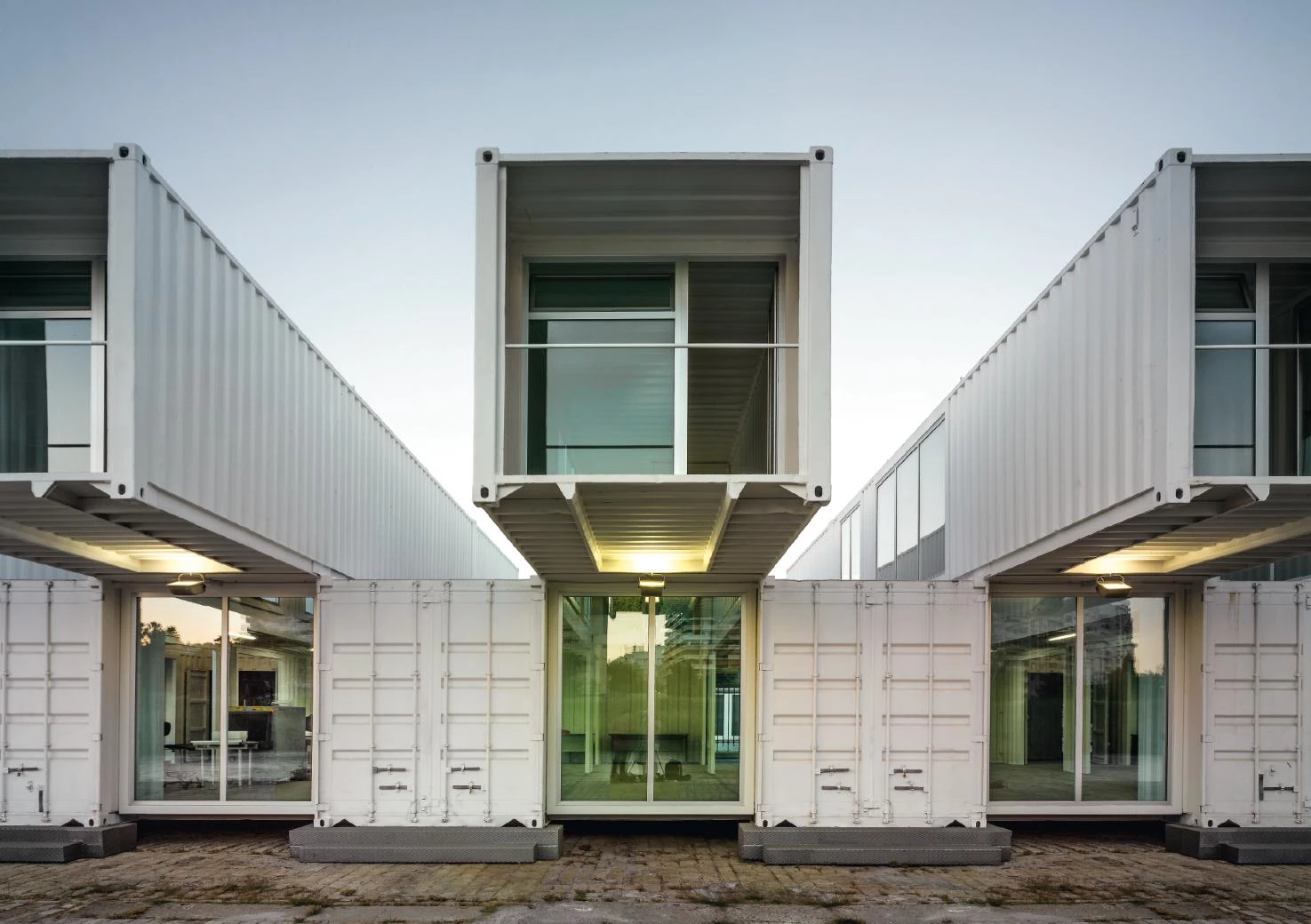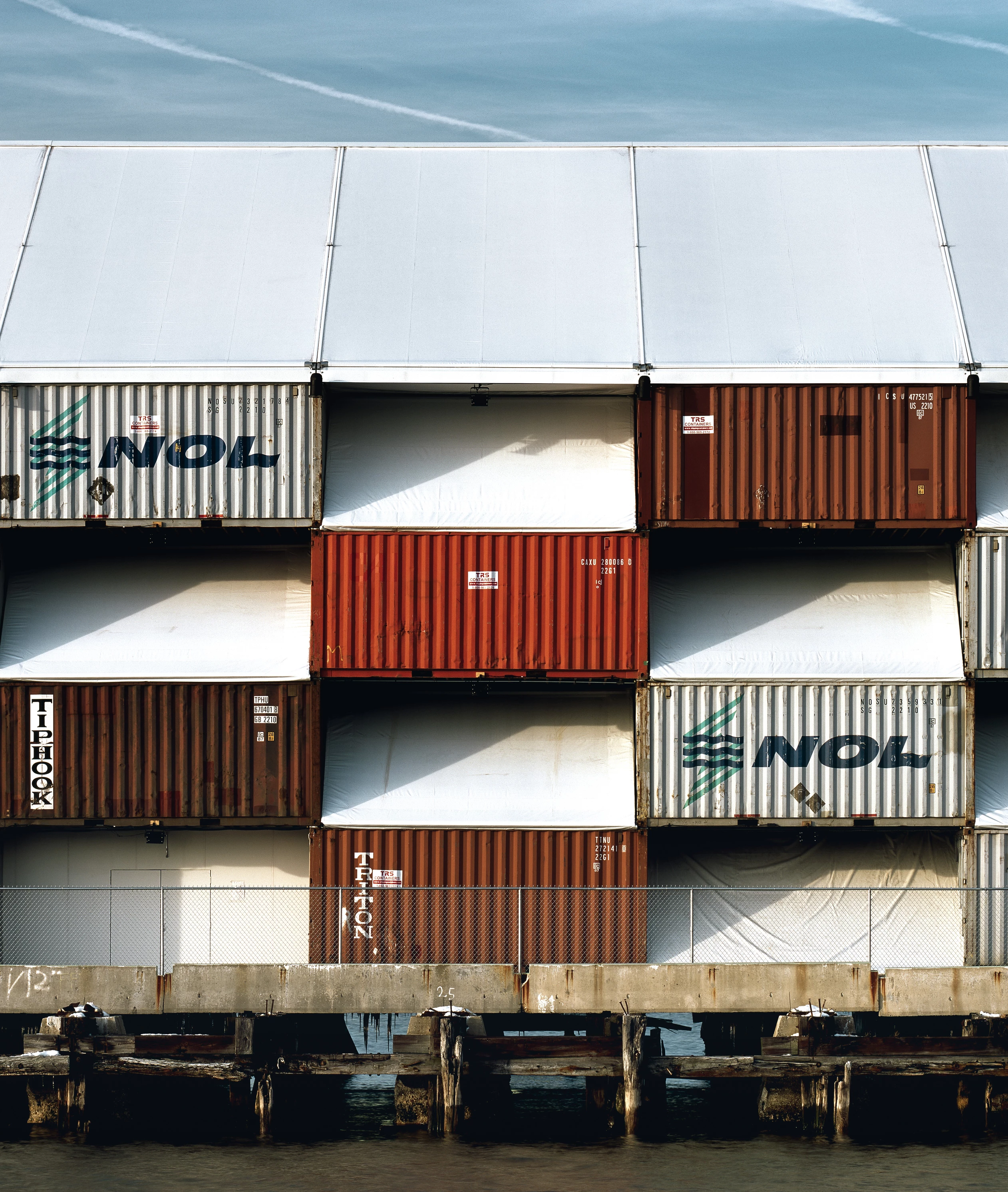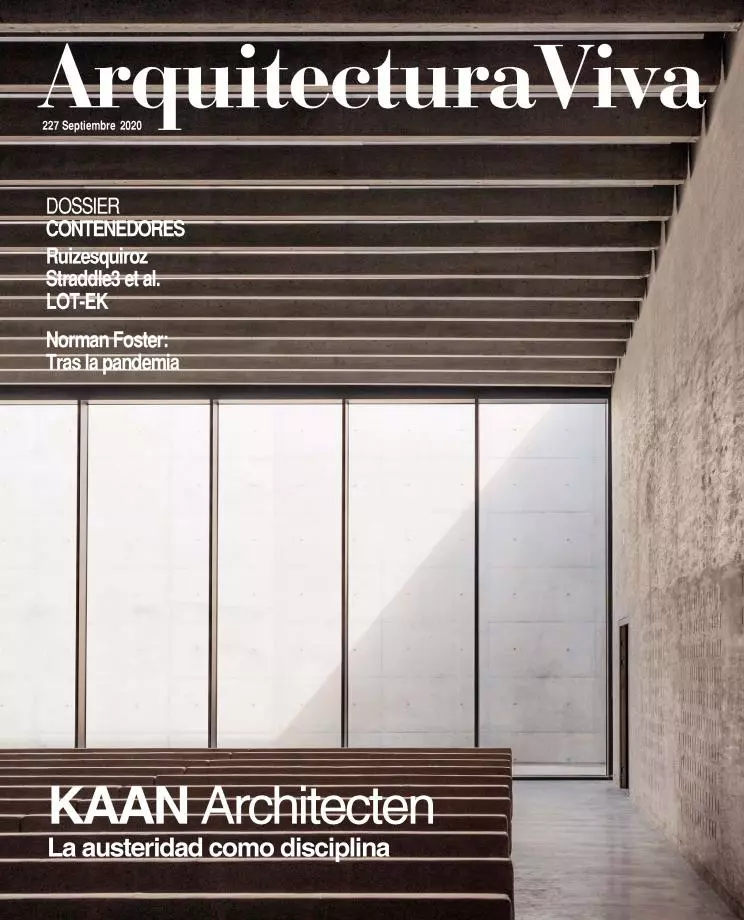Building with Containers
Boîtes à miracles

Hombre de Piedra, Terminal de Cruceros de Sevilla
One of the main obsessions of modernity was the idea of aligning architecture with the factory. Standardization, serialization, modularization, prefabrication, and the recourse to pieces prepared in the workshop were some of the strategies applied in the effort to make true this dream; strategies then joined by others, including recycling or reuse of industrial components.
Notable among the latter are the containers used for transporting goods around the world, those rigorously functional objects on which international trade networks depend, to the point that some considered them to be the basic unit of measurement of globalization (see ‘The Revolution of the Container,’ Arquitectura Viva 178).
Architects’ growing interest in containers is logical to an extent. They are modular and relatively lightweight, transportable by conventional means, also easy to install, potentially collapsible, and therefore quite efficient from a sustainability point of view. Furthermore, a container is delivered completely finished, perfectly ready to be used, and yet can be transformed as desired, however the architect wishes, lending itself to a broad range of possible forms, from the container exactly as it has come from the factory to the free manipulation of its walls to create apertures of different sizes, thanks to the high resistance and rigidity of steel.
But though the advantages of the container are many, so are its disadvantages. For starters, and most importantly, a container is not in itself an inhabitable space. It has a door, but no windows. Its proportions are not outright pleasant; it is long and narrow. And because of its industrial appearance, it tends to be associated with emergency constructions of the most precarious kind.
The challenge, hence, is to imprint on containers an architectural logic of their own, using their pros wherever it may make sense to, in the pursuit of a compromise or middle way between literal adaptation, which inevitably results in squalid spaces, and indiscriminate manipulation, which hinders leveraging the virtues of containers and ultimately makes the building an overly expensive experiment.
The three projects featured in this dossier are models that can help give us an understanding of the architectural logic of containers. In the first, the Amaya Sport headquarters in Noáin (Navarra) by Madrid-based Josean Ruiz Esquiroz, ten containers have been used as structural elements in the formation of the roof, without renunciation of their capacity as storage space. In the second work, provisional accommodations in Barcelona’s Ciutat Vella neighborhood by the team comprising Straddle3, Eulia Arkitetura, and Yaiza Terré, a number of units are stacked on top of one another to address a particular social emergency situation. And in the third project, apartments in Johannesburg by the design studio LOT-EK, which runs offices in New York and Naples, 140 shipping containers were taken from the South African city’s dry port, one of the world’s busiest.

Shigeru Ban, Museo Nómada, Nueva York (Estados Unidos)





